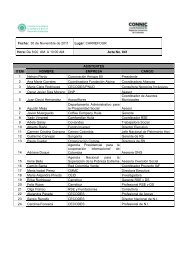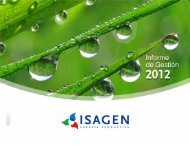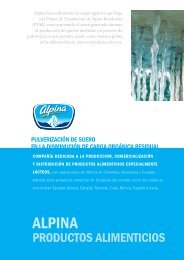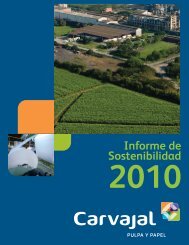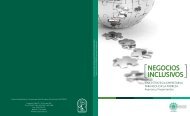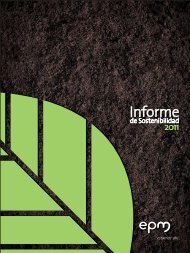Setting new standards - Friends Life
Setting new standards - Friends Life
Setting new standards - Friends Life
Create successful ePaper yourself
Turn your PDF publications into a flip-book with our unique Google optimized e-Paper software.
PARENT COMPANY ACCOUNTS<br />
ABBREVIATIONS AND DEFINITIONS<br />
Notes to the EEV results continued<br />
3. <strong>Life</strong> & Pensions EEV profit<br />
(a) Contribution from <strong>new</strong> business<br />
The contribution from <strong>new</strong> business is calculated using economic assumptions at the beginning of the period. The contribution from <strong>new</strong><br />
business using end-of-period economic assumptions was £196m (2005: £143m). Derived risk discount rates for <strong>new</strong> business have been<br />
based on end-of-period economic assumptions.<br />
The contribution from <strong>new</strong> business is quoted after cost of required capital and share incentives. The table below gives the contribution<br />
before cost of capital and share based payments.<br />
2006 2005<br />
£m £m<br />
Contribution from <strong>new</strong> business before cost of capital and share based payments 212 152<br />
Cost of share based payments (2) (2)<br />
Cost of capital (6) (6)<br />
Contribution from <strong>new</strong> business 204 144<br />
(b) Profit from existing business – <strong>Life</strong> & Pensions<br />
Profit from existing <strong>Life</strong> & Pensions business comprises the expected return on the value of in-force business at the start of the period plus<br />
the impact of any changes in the assumptions regarding future operating experience, changes in the reserving basis (other than economic<br />
assumption changes) and profits and losses caused by differences between the actual experience for the period and the assumptions used to<br />
calculate the embedded value at the end of the period.<br />
The expected return on the value of in-force business is the difference between the expected return on the assets backing the liabilities and<br />
the expected change in the market-consistent value of the liabilities. Effectively, this approach is similar to applying an unwind in the risk<br />
discount rate to the value of the in-force business at the beginning of the year. However, the risk discount rate to be used is a rate<br />
appropriate over the period of return only, which is not necessarily equal to the overall in-force risk discount rate averaged across all future<br />
durations above.<br />
(c) Development costs – <strong>Life</strong> & Pensions<br />
Development costs represent investments made to improve future EEV profits, for example by reducing expenses or increasing future <strong>new</strong><br />
business volumes. In particular, the <strong>Life</strong> & Pensions costs represent investment in developing advanced electronic trading systems,<br />
e-commerce related activities, and <strong>new</strong> business service automation and improvement.<br />
(d) Expected return on shareholders’ net assets<br />
The expected return on shareholders’ net assets held within the <strong>Life</strong> & Pensions business comprises the return on the shareholders’ net<br />
assets held by the life assurance companies within that business, using the investment return assumptions used to calculate the embedded<br />
value at the beginning of the period.<br />
The expected return on corporate net assets is the expected investment return on assets held by <strong>Friends</strong> Provident plc and its non-life<br />
subsidiaries. It excludes the expected return on the net pension liability and the result of the F&C business, which are shown separately in<br />
the summary consolidated income statement.<br />
<strong>Friends</strong> Provident Annual Report & Accounts 2006 175








